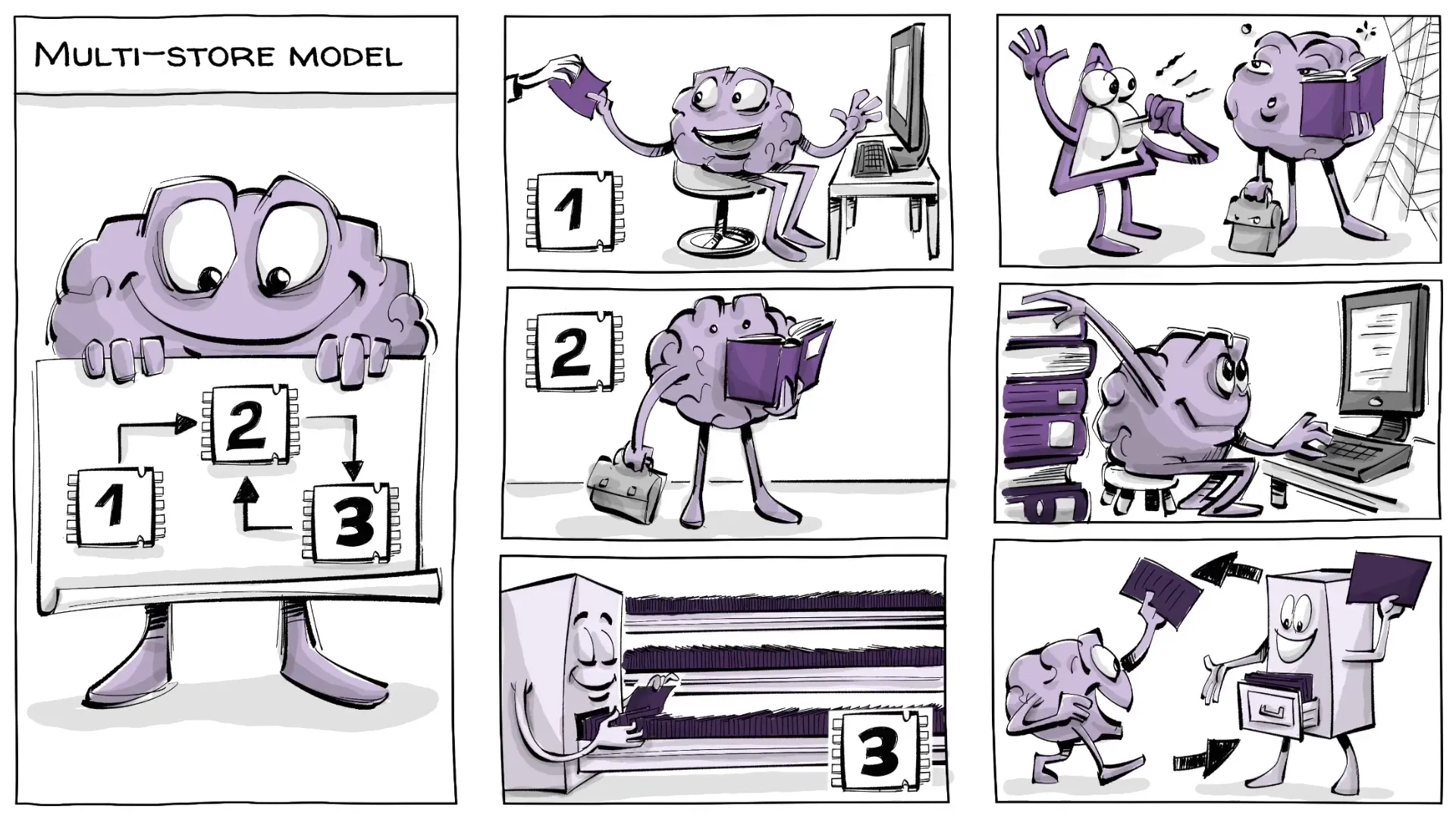Jan 2, 2025
The Multi-Store Model: How We Make Memories
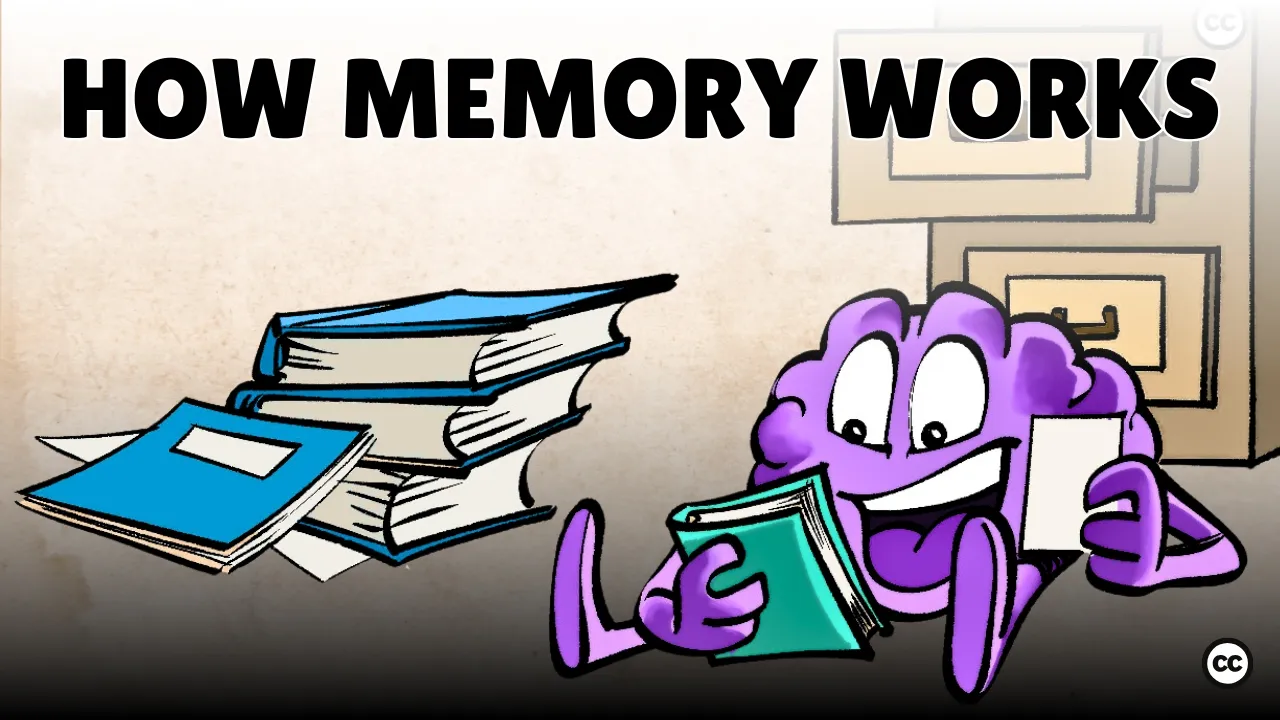
Intro to memory
If we show you a random shape, your eyes will send the information to your brain, which will then decide what to do with it - perhaps not much. If we show you another shape, your senses will again send it to your brain, but now it might be able to find some related information that was stored in your memory. What’s going on here? You may have forgotten, but when you were young, you knew nothing. The first time you saw a particular shape, it was meaningless. Over time and in search for order, you started to recognize patterns. One day someone gave that particular thing meaning, your mind labeled it as important and decided to store it for future use.
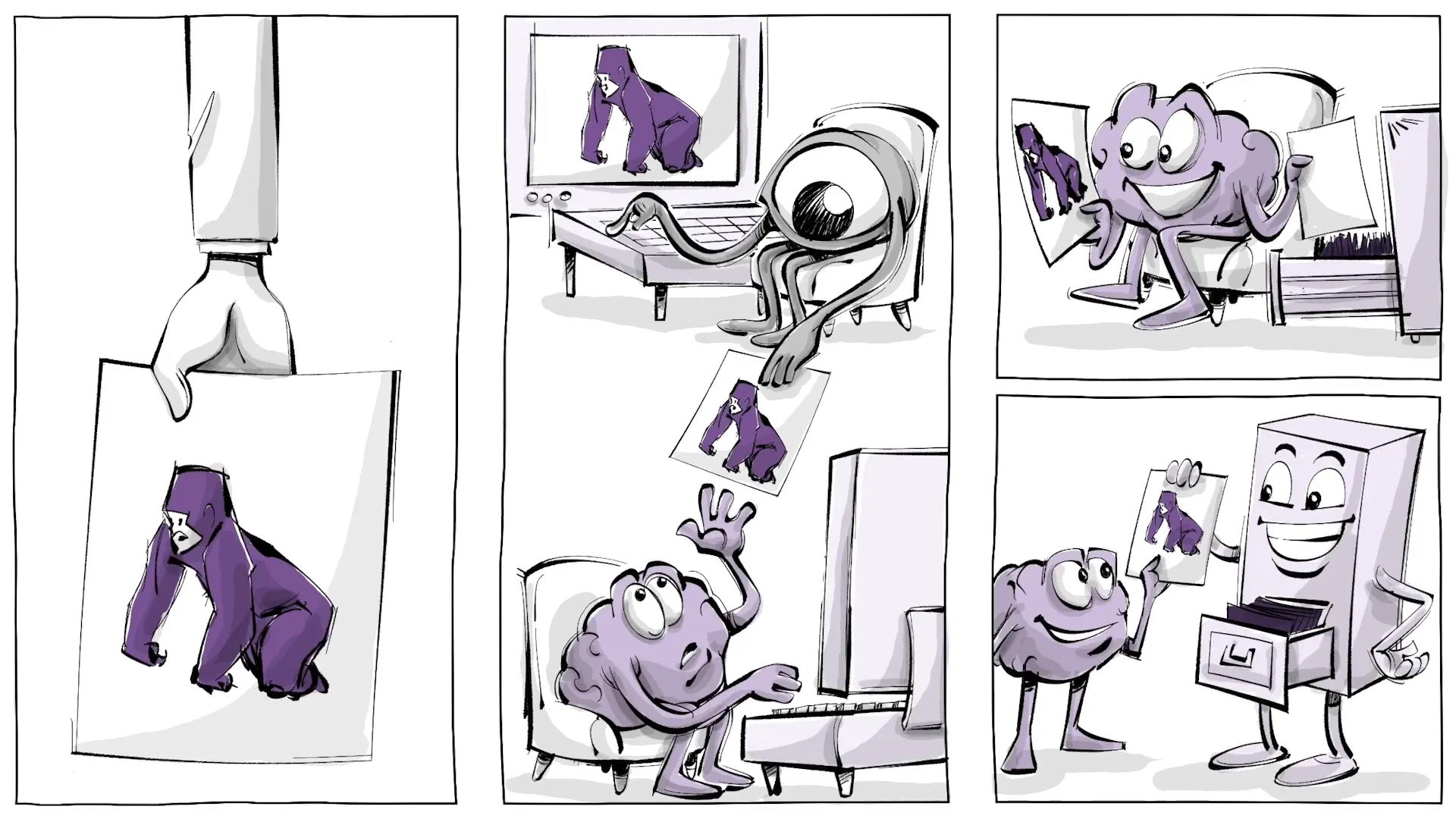
How's memory work?
The multi-store model asserts that the human brain has three processors: a sensory register, where new information enters; a short-term memory, which quickly assesses the input; and a long-term store, where it can potentially be held forever. We need attention to get things to the short-term memory, rehearsal to hold it there for longer, and transfer for sending it to long-term storage — and bringing it back. Let’s now try to understand how everything interacts.
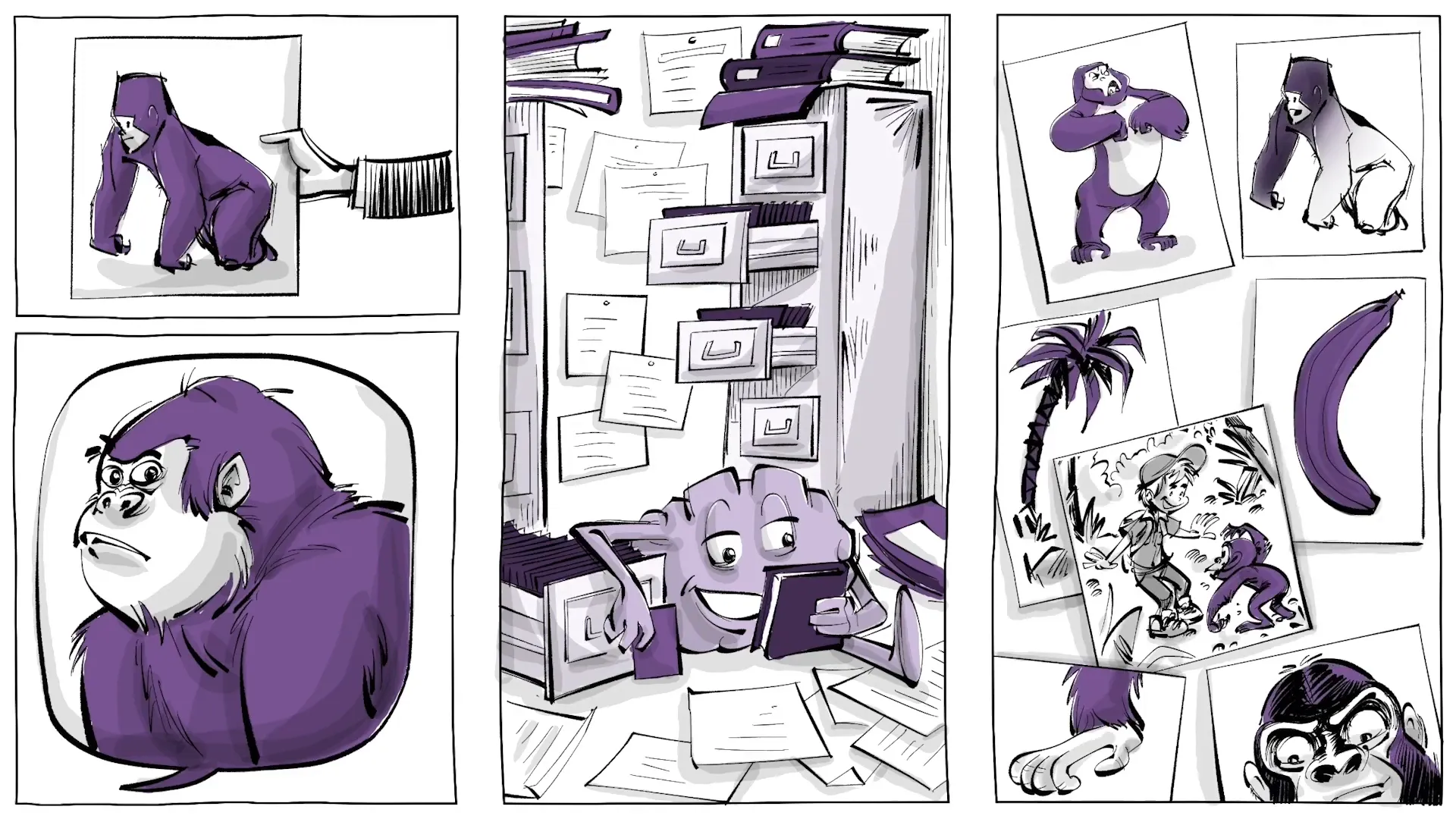
The multi-store model
Our life is a continuous stream of stimuli that we perceive in different ways. There are our senses such as vision, touch, smell, hearing, and taste. There are internal states such as stress, sleepiness, or hunger. And there are emotions, wants, and intentions. All of them are part of the sensory input that our brain has to process all the time.
Sensory register
The sensory register can perceive any such new stimuli. They are then filtered by attention processes and decomposed into manageable chunks. These chunks of information are then sent further. 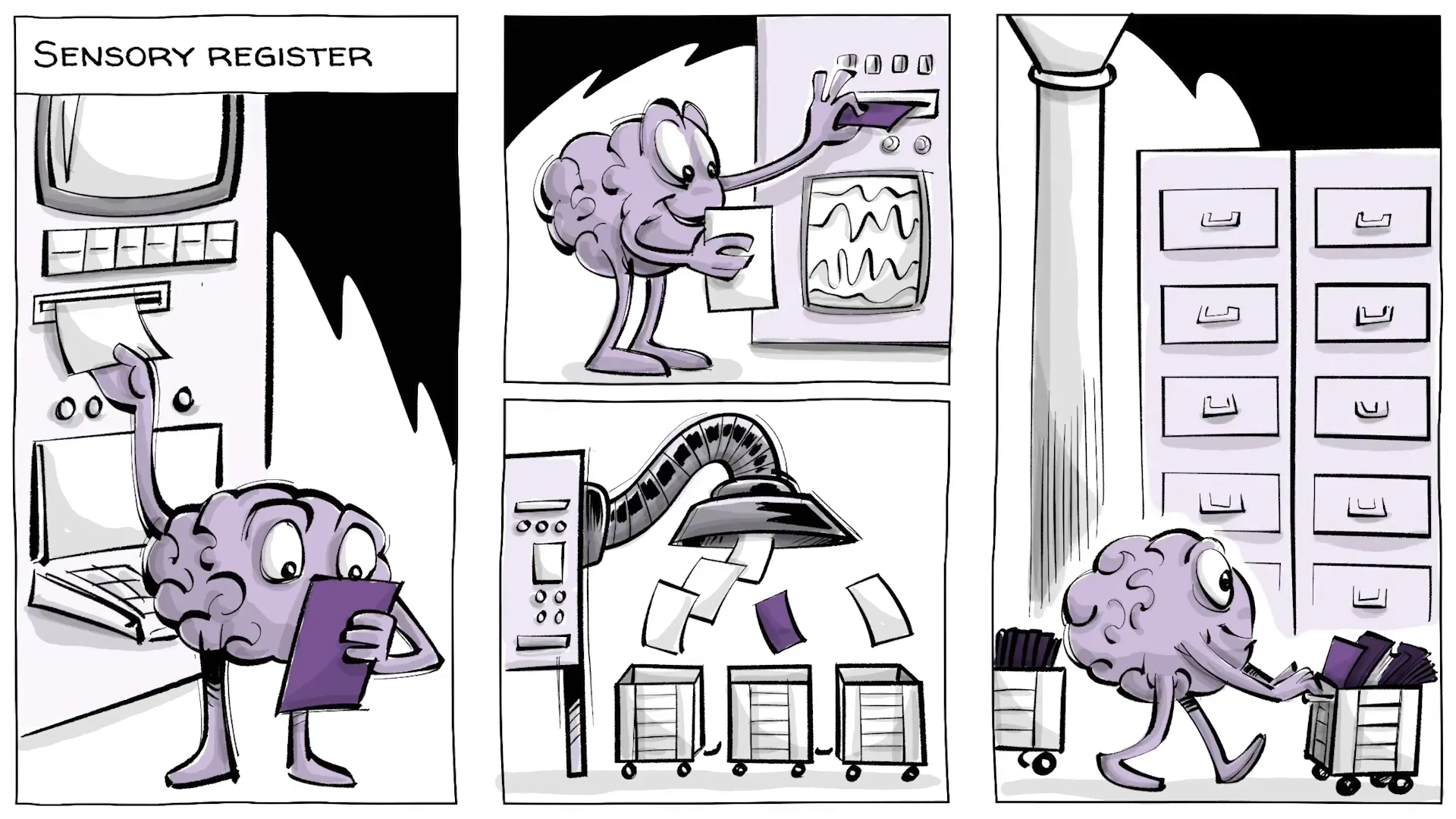
Short-term memory
The short-term memory holds the new info for a moment. Then it will either forget it, transfer it to the long-term memory, or instantly use it by bringing it to our attention. Also known as working memory, our attention can hold about 7 bits of information for a few seconds to complete a task. If we pay attention, our brain can send fresh memories to the long-term store. This happens especially well when we rest. During sleep, we tend to consolidate important things and discard others — which we then forget.
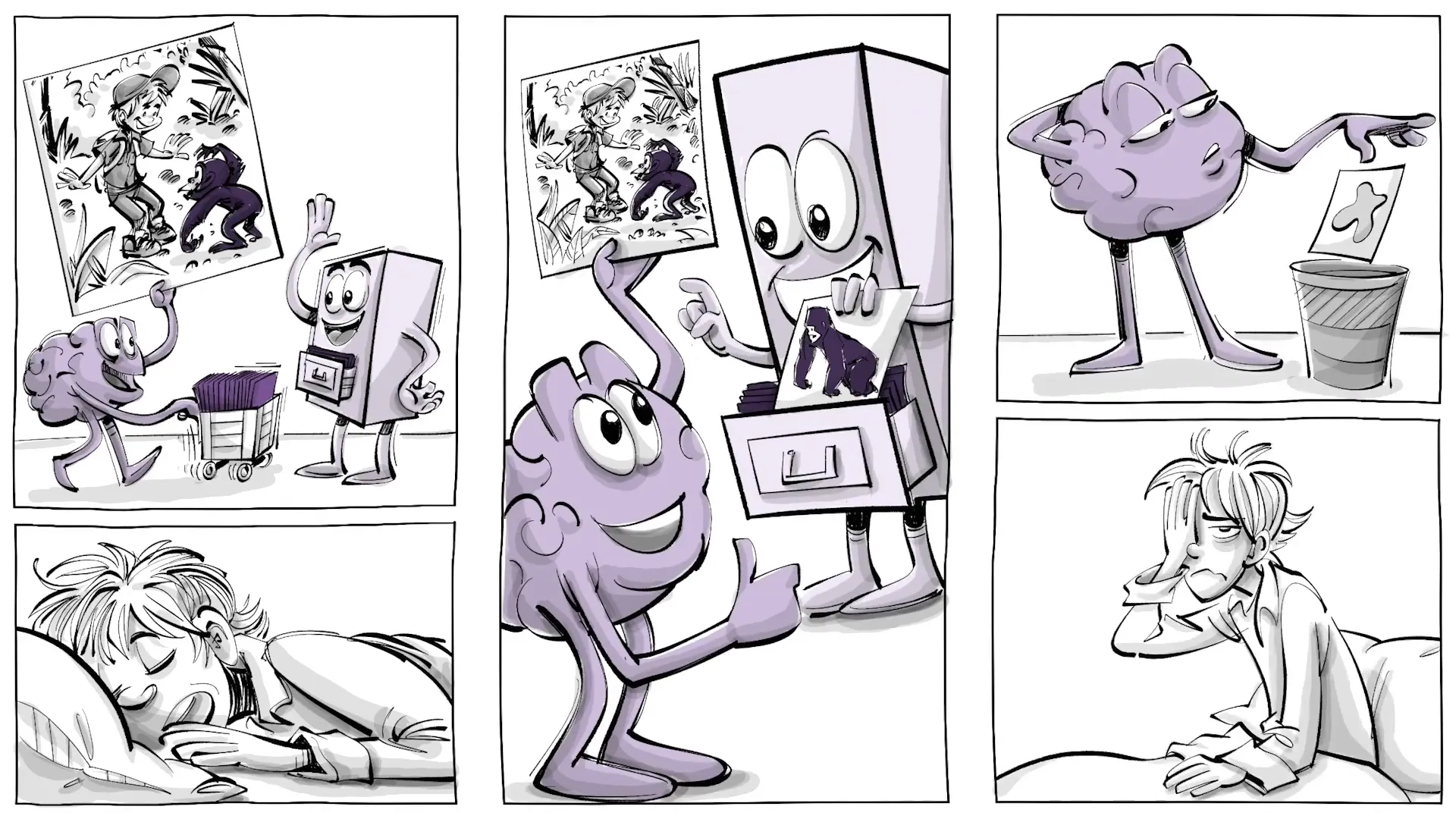
Long-term memory
The long-term memory is a vast library of stories, experiences, facts, and concepts, some of which we can recall for life, and others we are unable to remember the next day. Inside this long-term store are again different types of memories. There are episodic memories, which are chunks of detailed information with a high emotional value. Such as all your stories, some of which you might be able to recall in great detail. Like the first day of school or your first kiss. Maybe you can even recall some specific thoughts from that day. There are semantic memories, things like facts or general knowledge.
Repeated episodic memories, like the way to school, can also, over time, turn into semantic information. You can think of such memories as a large network of ideas: If you see a particular shape, you may think: gorilla - ape - human - intelligence. Episodic and semantic memories are known as explicit memories. They are conscious recollections. They are all the information and experiences we know we hold.
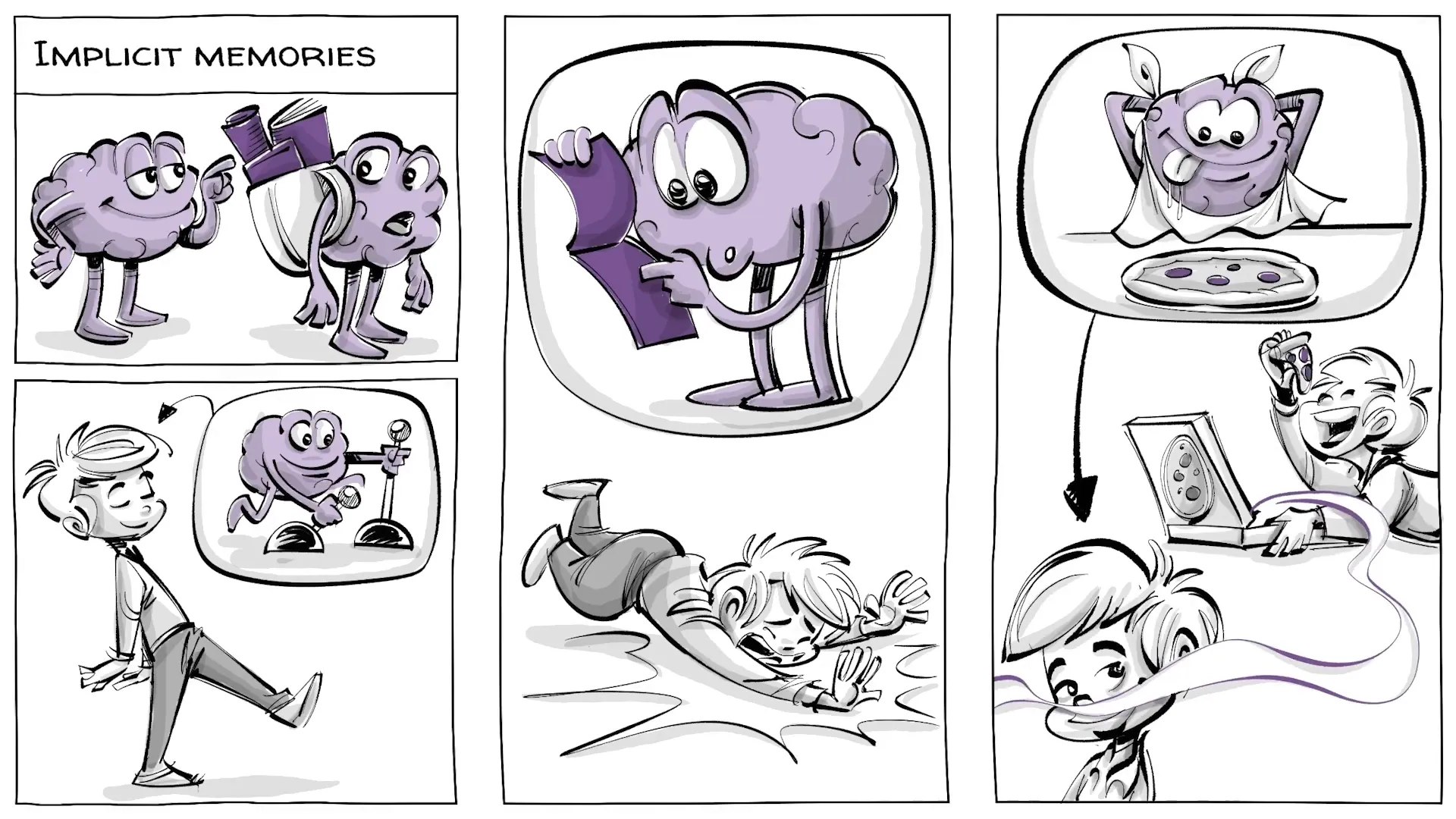
Memory often change
There are also implicit memories, skills and things you are not aware of. The process of walking relies on muscle memory. You’ve learned it by trying and failing, and today you have no idea how you actually do it. Implicit memories are also at work when we unconsciously react to a stimulus — a process known as conditioning. To make things more complicated, our memories often change. Sometimes we forget parts, sometimes we add new details to old memories in response to how we feel right now. When we think of a holiday we took with someone we don't like anymore, a trip that was actually nice might be remembered as unpleasant today.
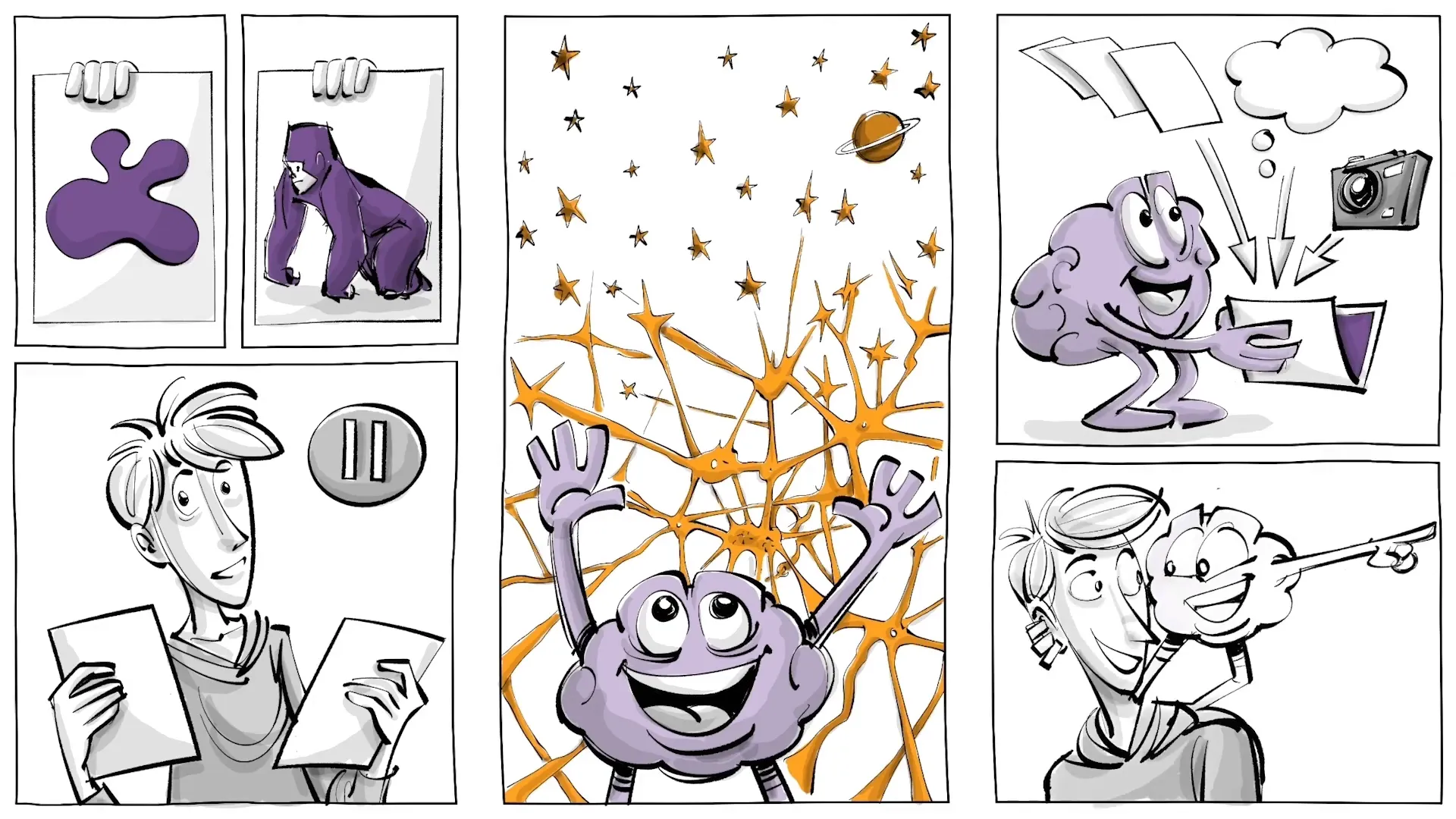
Creating your own memory
So next time you see this or that shape, you might want to pause and pay tribute to the fact that there are more connections in your brain than stars in the universe, here to help you organize inputs, thoughts, and memories to get you through life. Now, the best thing about memories is still creating them! Trying new things, failing, and then trying them again is one good way to do just that!
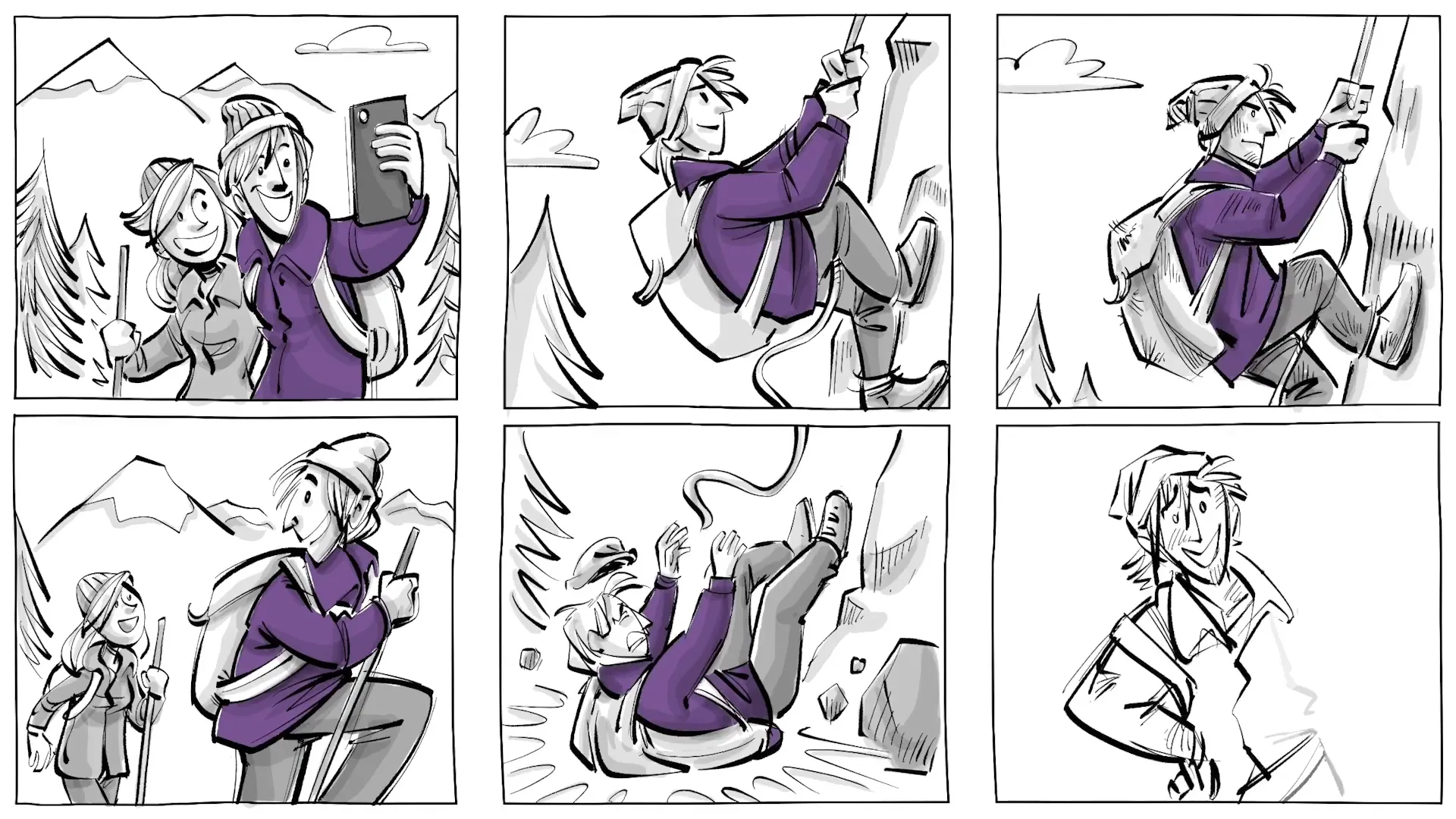
Conclusion
If you like how we explain complicated ideas in simple cartoon animation, you can support us. Just visit us, learn how it works, and what’s in it for you. We hope to see you there! And if you are a lifelong learner, a parent or an educator, check our website sproutsschools.com. There you’ll find this and other video lessons, additional resources, and classroom activities.
This article was created from the video The Multi-Store Model: How We Make Memories with the help of AI. It was reviewed and edited by a human.
